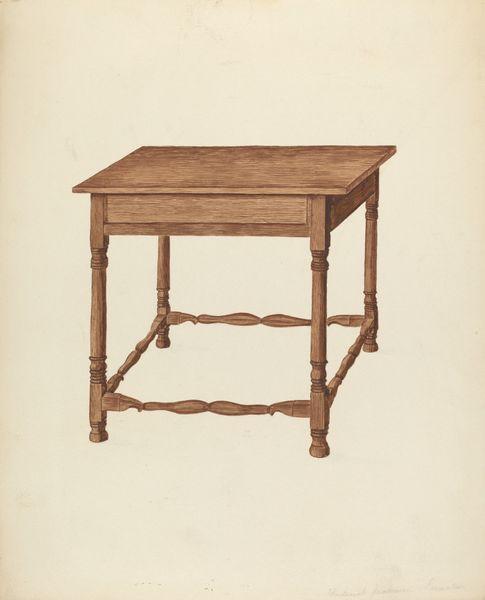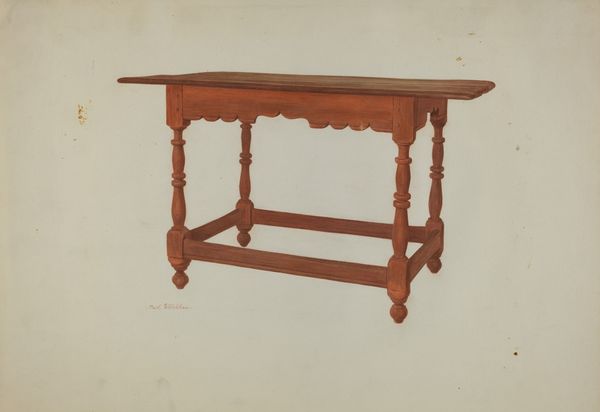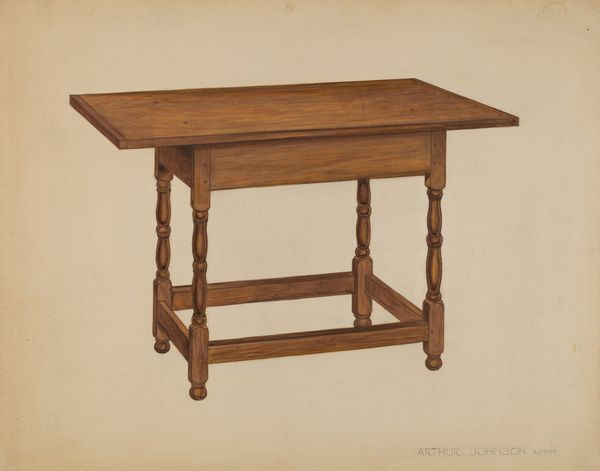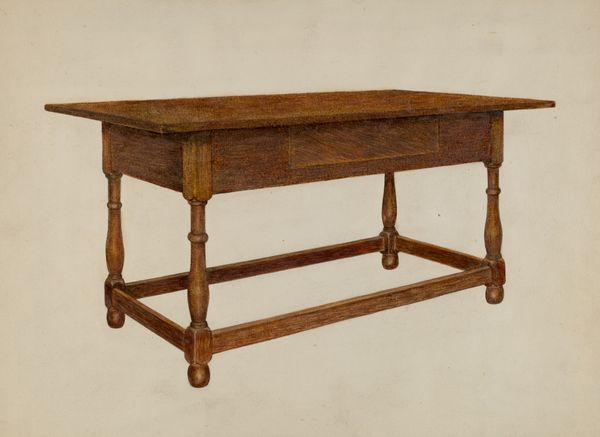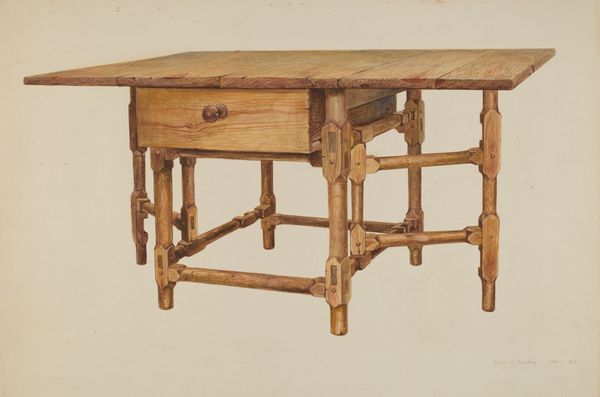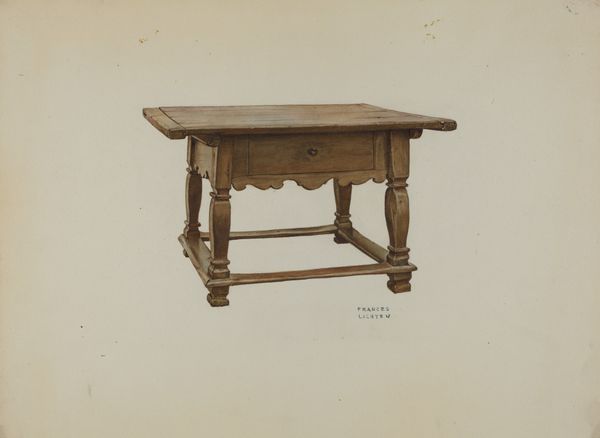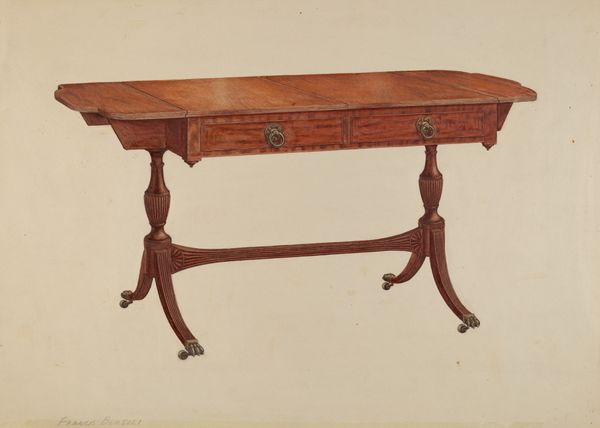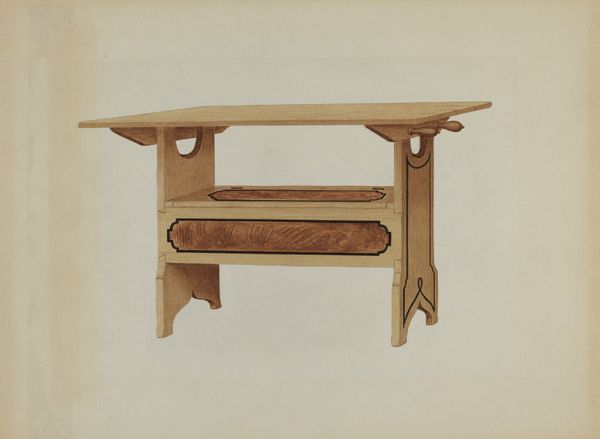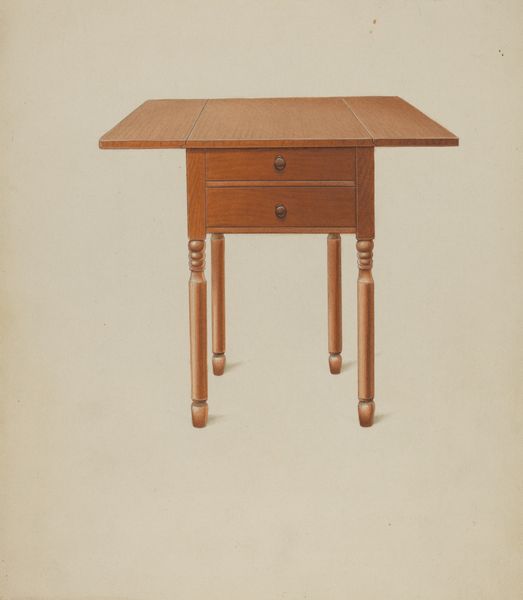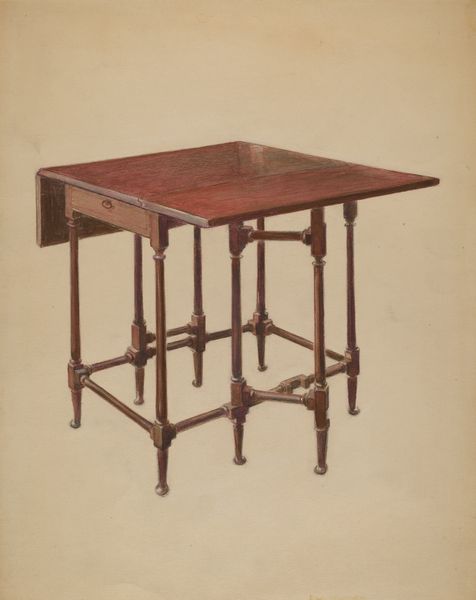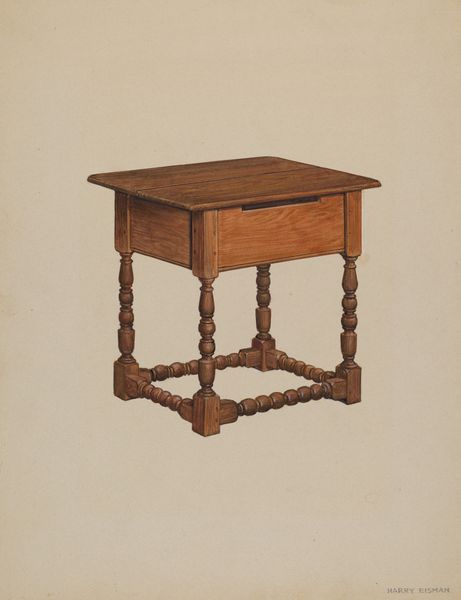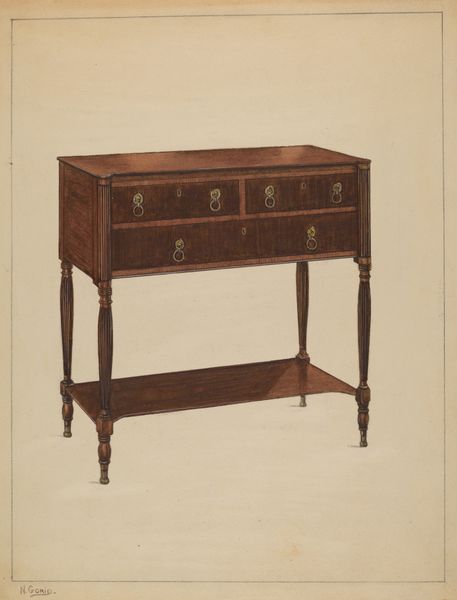
drawing, paper, pencil
#
drawing
#
charcoal drawing
#
paper
#
geometric
#
pencil
Dimensions: overall: 32.2 x 40.3 cm (12 11/16 x 15 7/8 in.) Original IAD Object: none given
Copyright: National Gallery of Art: CC0 1.0
Editor: So, here we have Isadore Goldberg's "Drop-leaf Table," from around 1938, a drawing made with pencil and charcoal on paper. There’s something about this really ordinary subject rendered with such care, like it’s elevating the everyday. How do you interpret this work? Curator: The table… It's more than just furniture; it's a cultural artifact imbued with symbolic resonance. Notice the geometric forms, repeated and refined. What do they evoke for you? Editor: Stability, maybe? Or tradition? Curator: Exactly. Tables have historically been central to domestic life, points of congregation. The artist isn't just depicting a table; he's conjuring up cultural memory, those associations. It’s interesting he chose this technique, graphite and charcoal: materials associated with sketches or studies. How does this choice affect our perception of the work? Editor: Makes it feel more intimate, like a glimpse into a private thought. I suppose it reminds us that even everyday objects can hold symbolic meaning. I see how he chose this very homey object to talk about memory, like still-life painters who are representing everyday domestic life. Curator: Precisely. He captures the essence of domesticity. It serves as a potent symbol of a certain time, doesn't it? Do you feel that objects represented here point us to considering the future or maybe looking at the past in a melancholic way? Editor: Hmmm, both in a way! There's that homey object looking familiar but also there is some sadness that it is gone. Well, this table drawing offers more layers than I had initially anticipated. Curator: Indeed. The most unassuming images can carry the greatest weight, if only we learn to decipher their visual language.
Comments
No comments
Be the first to comment and join the conversation on the ultimate creative platform.
